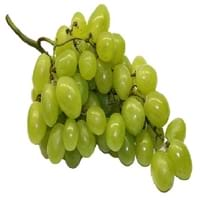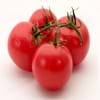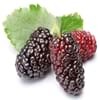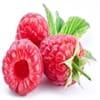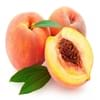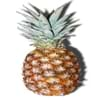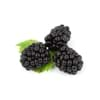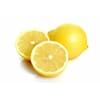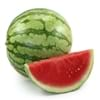Health Benefits
Anti depressant, Cancer prevention, Heart care, Muscle pain relief, Prevents constipation, Regulation of heart rate, Weight loss properties
Cancer prevention, Kidney stone treatment, Prevents constipation, Treatment of alzheimer's disease
General Benefits
Controls blood pressure, Eye care, Maintains healthy cholesterol level, Strengthens bones
Digestive aid, Improves eye vision, Maintains healthy cholesterol level, Treatment of migraine
Skin Benefits
Anti-aging benefits, Heals sunburn, Skin rejuvenation, Treatment of acne, Treatment of skin diseases
Anti-aging benefits, Heals sunburn, Skin rejuvenation, Treatment of dark spots
Hair Benefits
Good conditioner, Prevents hair loss, Softening mask
Prevents hair loss, Regulates hair growth, Treatment of dandruff
Allergy Symptoms
Anaphylaxis, Coughing, Diarrhea, Eczema, Hives, Itching sensation in throat, Nausea, Skin Rashes, Runny nose, Sneezing, Swelling of mouth, tongue or lips, Vomiting, Wheezing
Anaphylaxis, Asthma, Breathing difficulty, Coughing, Drop in blood pressure, Hives, Skin rash, Stuffy nose, Swelling of mouth, tongue or lips, Wheezing
Side Effects
Heart burn
Allergic reaction, Skin rash, Might slow down the process of blood clotting
Best Time to Eat
Along with meal, Don't consume at night and before bed, Morning time (before lunch)
As a snack in the late afternoon, Don't consume at night and before bed, Eat the fresh ones, avoid mixing with any other foods, don't eat after meal., Morning time (before lunch)
Vitamin B5 (Pantothenic Acid)
Vitamin C (Ascorbic Acid)
Vitamin K (Phyllochinone)
Calories in Fresh Fruit with Peel
Calories in Fresh Fruit without Peel
Not Available
Not Available
Type
Berry, Fruit vegetable
Berry
Season
All seasons
Autumn, Summer
Varieties
Better Boy, Early Girl, Beefsteak, Beefmaster, Pink Brandywinem, Caspian Pink, Thai Pinks, Hawaiian Pineapple, Kellogg’s Breakfast, Cherokee Purple, Black Ethiopian and Paul Robeson
Cabernet Sauvignon, Merlot, Pinot Noir, Syrah/Shiraz and Zinfandel
Color
Green, Orange, Pink, Purplish black, Red, White, Yellow
Green, Red
Inside Color
Red
Light Green
Taste
Sour, Sweet
Sweet-Sour
Origin
Central America, South America
Western Asia, Central Europe
Soil Type
Loam, Sandy loam
Clay loam, Sandy loam
Climatic Conditions
Sunny, Warm
Warm
Facts about
- Around 10,000 varieties of tomatoes are grown in the world.
- In Buñol, people celebrate the Tomatina festival where around 1.5 lakh tomatoes are used.
- As per Guinness book of records, heaviest tomato weighed 3.51 kg.
- If left alone, a grapevine can spread 50 feet and even more.
- There are more than 8,000 varieties of grape worldwide.
- They are available in 7 different colors: red, green, white, black, purple, blue and golden.
Other Countries
Brazil, Egypt, India, Iran, Italy, Mexico, Spain, Turkey, United States of America
Argentina, Armenia, Australia, Chile, France, Iran, Italy, Portugal, Romania, Turkey, United States of America
Top Importer
Nigeria
United States of America
Top Exporter
Netherlands
Chile
Botanical Name
Solanum lycopersicum
Vitis vinifera
Synonym
Lycopersicon esculentum
Not Available
Subkingdom
Tracheobionta
Tracheobionta
Division
Magnoliophyta
Magnoliophyta
Class
Magnoliopsida
Magnoliopsida
Subclass
Asteridae
Rosidae
Family
Solanaceae
Vitaceae
Species
S. lycopersicum
Vitis vinifera
Generic Group
Nightshade
Grape
Difference Between Tomato and Grape
We might think that Tomato and Grape are similar with respect to nutritional value and health benefits. But the nutrient content of both fruits is different. Tomato and Grape Facts such as their taste, shape, color, and size are also distinct. The difference between Tomato and Grape is explained here.
The amount of calories in 100 gm of fresh Tomato and Grape with peel is 18.00 kcal and 69.00 kcal and the amount of calories without peel is Not Available and Not Available respectively. Thus, Tomato and Grape belong to Low Calorie Fruits and Low Calorie Fruits category.These fruits might or might not differ with respect to their scientific classification. The order of Tomato and Grape is Solanales and Vitales respectively. Tomato belongs to Solanaceae family and Grape belongs to Vitaceae family. Tomato belongs to Solanum genus of S. lycopersicum species and Grape belongs to Vitis genus of Vitis vinifera species. Beings plants, both fruits belong to Plantae Kingdom.

